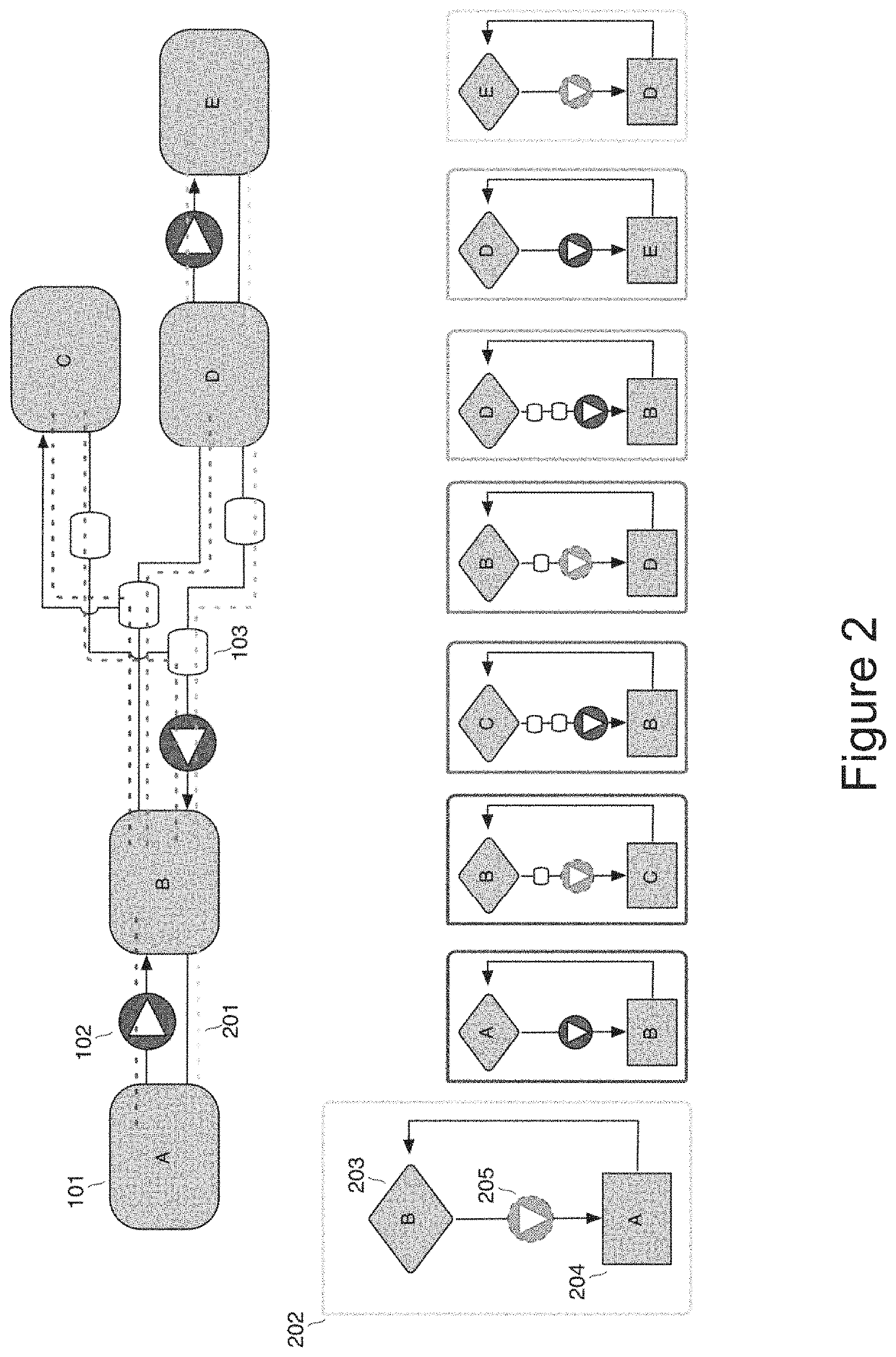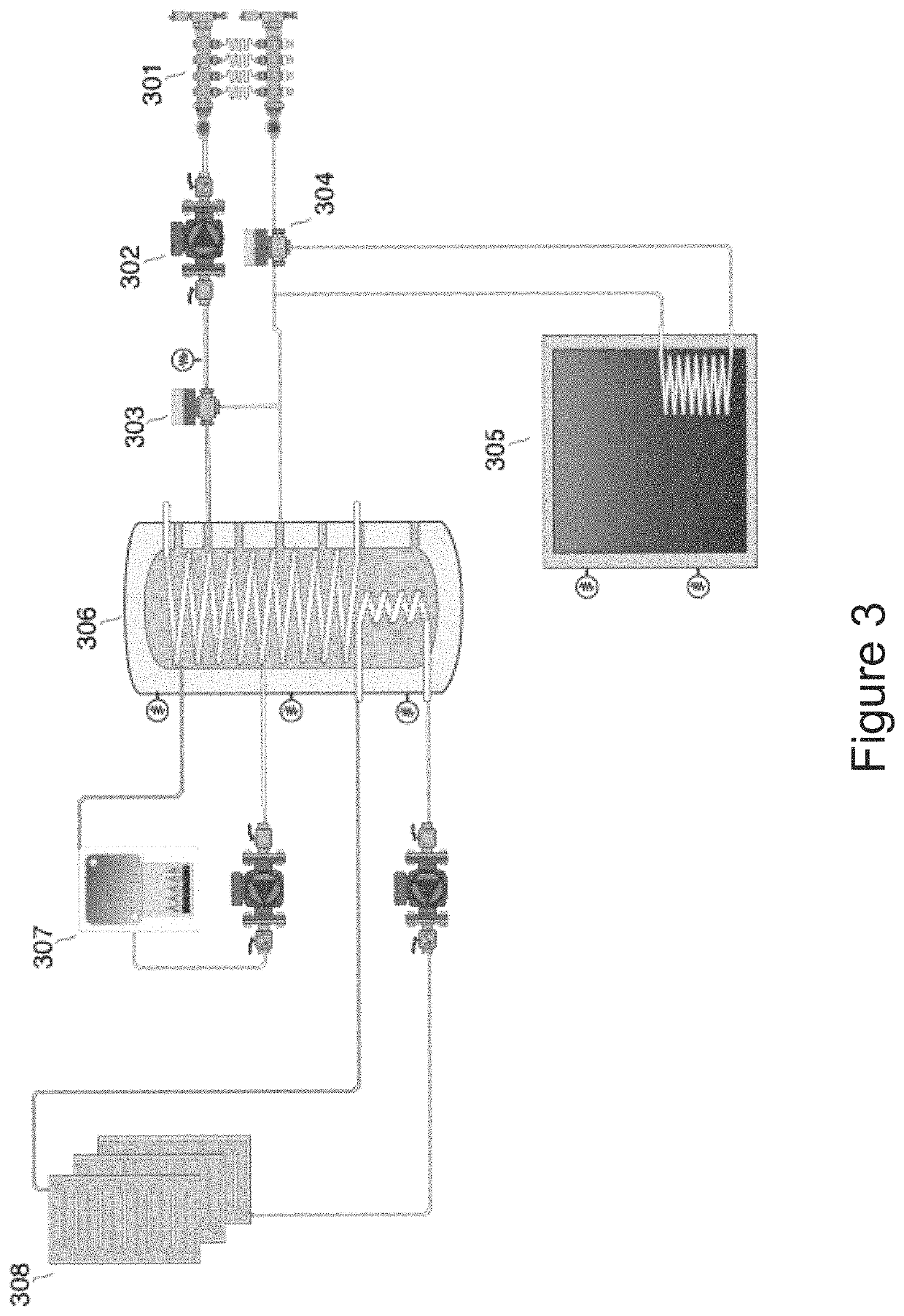Automated method of generalized building automation from atomic physical models and control loops thereof
a technology of building automation and physical models, applied in adaptive control, program control, instruments, etc., can solve the problems of less than optimal performance, high installation cost, and high cost of building automation systems, and achieve the effect of increasing comfort, performance and/or efficiency
- Summary
- Abstract
- Description
- Claims
- Application Information
AI Technical Summary
Benefits of technology
Problems solved by technology
Method used
Image
Examples
Embodiment Construction
[0029]Explanation will be made below with reference to the aforementioned figures for illustrative embodiments concerning the present disclosure.
[0030]In its fundamental form, a building control system contains a control loop, consisting of a controller, a system under control, and sensors for gathering data about the state of the controlled system. The controller makes decisions based on the sensor feedback. The control decisions are then applied to the controlled system. The resulting effects on the system are monitored by the sensors. One embodiment of a building control loop comprises an air temperature sensor, a thermostat controller, and a controlled system comprising a furnace, fan, air conditioner, and building. In this embodiment, the furnace and air conditioner are sources, the fan is a transport, and the building is an energy sink.
[0031]A controller may contain a simulation engine. The simulation engine allows the system to predict the outcome of any possible control acti...
PUM
 Login to View More
Login to View More Abstract
Description
Claims
Application Information
 Login to View More
Login to View More - R&D
- Intellectual Property
- Life Sciences
- Materials
- Tech Scout
- Unparalleled Data Quality
- Higher Quality Content
- 60% Fewer Hallucinations
Browse by: Latest US Patents, China's latest patents, Technical Efficacy Thesaurus, Application Domain, Technology Topic, Popular Technical Reports.
© 2025 PatSnap. All rights reserved.Legal|Privacy policy|Modern Slavery Act Transparency Statement|Sitemap|About US| Contact US: help@patsnap.com



